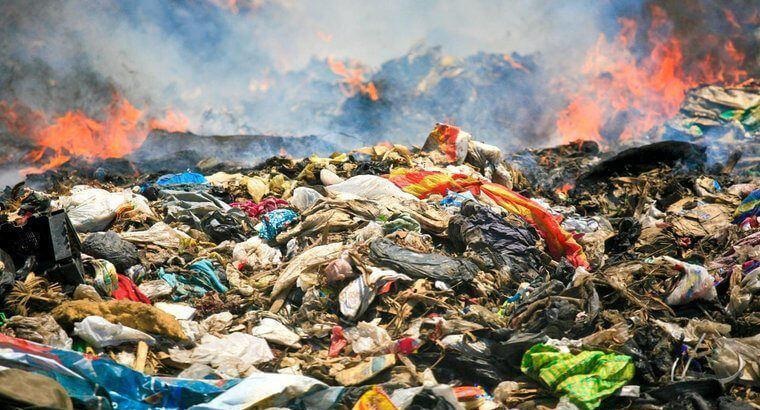The Effects of Fast Fashion on the Environment.
News Mania Desk / Piyal Chatterjee/ 4th January 2025

Clothing stores like Zara, Forever 21, and H&M create affordable, stylish apparel to meet the demands of youthful customers. However, rapid fashion has a big effect on the environment. The UN Environment Programme (UNEP) estimates that the sector uses the second-most water and contributes roughly 10% of global carbon emissions, which is more than all international travel and maritime shipping put together. Unfortunately, customers frequently ignore the issues with quick fashion.
Fast fashion: what is it?
The phrase “fast fashion” has gained popularity in discussions about sustainability, fashion, and environmental awareness. In order to capitalize on current trends, the phrase describes “cheaply produced and priced garments that copy the latest catwalk styles and get pumped quickly through stores.”
The fast fashion model gets its name from the speed at which clothes are designed, produced, distributed, and marketed. This allows merchants to draw larger amounts of a wider range of products, giving customers access to more stylish and unique products at a lower cost.
When Zara arrived in New York at the start of the 1990s, the phrase was first utilized.
The New York Times created the term “fast fashion” to characterize Zara’s goal of having clothing travel from the design stage to retail sales in just 15 days. In the fast fashion industry, Zara, UNIQLO, Forever 21, and H&M are the major participants.
The Negative Aspects of Rapid Fashion
Fashion production accounts for 10% of global carbon emissions, which is equal to the amount produced by the European Union, according to a Business Insider investigation. 85% of all textiles end up in landfills annually, and it depletes water supplies and contaminates rivers and streams. 50 billion plastic bottles, or 500,000 tons of microfibres, are released into the ocean annually just from washing clothes.
According to the 2018 Quantis International research, the three primary factors contributing to the industry’s worldwide pollution impacts are fiber production (15%), yarn preparation (28%), and dyeing and finishing (36%).
The study also found that the production of fiber has the biggest effects on ecosystem quality and freshwater withdrawal (water taken from a surface water or groundwater source) because of cotton cultivation, while the stages of dyeing and finishing, yarn preparation, and fiber production have the biggest effects on resource depletion because of their energy-intensive, fossil fuel-based processes.
The UN Framework Convention on Climate Change predicts that by 2030, emissions from the textile industry alone will have increased by 60%. A product’s “lead time” is the amount of time it takes to move from design to purchase through the supply chain. Zara was able to develop, manufacture, and deliver a new outfit in just two weeks in 2012. H&M in eight weeks, and Forever 21 in six. Because of this, the fashion business generates outrageous amounts of waste.
The Effects of Fast Fashion on the Environment
- Water Fast fashion has an adverse effect on the environment by using a lot of energy and water, depleting non-renewable resources, and emitting greenhouse gases. About 700 gallons of water are needed to make one cotton shirt, and 2,000 gallons are needed to make a pair of jeans, making the fashion industry the second largest consumer of water. Because the remaining water from the dying process is frequently poured into ditches, streams, or rivers, Business Insider also warns that textile dyeing is the second-largest water polluter in the world.
- Tiny plastic particles
Additionally, synthetic fibers that take hundreds of years to biodegrade, such as polyester, nylon, and acrylic, are used by businesses. According to a 2017 assessment by the International Union for Conservation of Nature (IUCN), the laundering of synthetic textiles like polyester is responsible for 35% of all microplastics—tiny fragments of non-biodegradable plastic—found in the ocean.
The globe uses almost 80 billion new pieces of clothes annually, 400% more than it did 20 years ago, according to the 2015 documentary The True Cost. Today, the typical American produces 82 pounds of textile waste annually. The production of leather requires large amounts of feed, land, water and fossil fuels to raise livestock, while the tanning process is among the most toxic in all of the fashion supply chain because the chemicals used to tan leather- including mineral salts, formaldehyde, coal-tar derivatives and various oils and dyes- is not biodegradable and contaminates water sources.
- Vitality
The energy-intensive process of turning plastic fibers into textiles uses a lot of petroleum and generates acids like hydrogen chloride and volatile particulate matter. Furthermore, the production of cotton, which is used in many fast fashion items, is not environmentally beneficial. Farmers’ health is at danger while using pesticides that are thought to be essential for cotton growth.
Wild silk, organic cotton, linen, hemp, and lyocell are more sustainable textiles that can be used in apparel to combat the waste that comes with rapid fashion.
The Effects of Fast Fashion on Society
The effects of fast fashion extend beyond the environment. In actuality, the sector also causes social issues, particularly in emerging nations. The non-profit organization Remake claims that young women between the ages of 18 and 24 make 80% of the clothing produced. According to a 2018 US Department of Labor report, there is proof of child labor and forced labor in the fashion sector in a number of countries, including Argentina, Bangladesh, Brazil, China, India, Indonesia, the Philippines, Turkey, and Vietnam. Human welfare is subordinated to sales and profits due to rapid production.
In Dhaka, Bangladesh, an eight-story manufacturing building housing multiple textile companies collapsed in 2013, leaving 1,134 workers dead and over 2,500 injured. In her undertaking
According to Annie Radner Linden’s analysis of the fast fashion industry, “the garment industry has always been a low-capital and labor intensive industry.”
Naomi Klein makes the case in her book No Logo that “cheap labor, vast tax breaks, and lenient laws and regulations” make poor countries viable for the apparel industry. The worldwide fashion business is the most labor-dependent sector, employing one in six people, according to The True Cost. Additionally, these developing countries hardly ever adhere to environmental laws; China, for instance, is a major manufacturer of fast fashion but is infamous for its air and water pollution and land degradation.
Could Slow Fashion Be the Answer?
The popular response to fast fashion and its effects on the environment is known as “slow fashion,” which advocates reducing excessive production, convoluted supply networks, and unthinking consumerism. Respect for people, the environment, and animals is promoted by it.
According to the World Resources Institute, businesses should develop, test, and fund business models that maximize the useful life of clothing by reusing it. The Alliance for Sustainable Fashion was established by the UN to combat the harm that fast fashion causes. “Hastening the environmentally and socially destructive practices of fashion” is its stated goal.
Buying from secondhand retailers like Poshmark and ThredUp Inc., both situated in California, USA, is one method consumers are cutting back on their consumption of fast fashion. Customers send their unwanted clothing to these websites, where it is sold for less than the original price. An additional option is to rent clothing, such as from the US-based companies Rent the Runway and Gwynnie Bee, the UK-based company Girl Meets Dress, and the Dutch company Mud Jeans, which leases organic jeans that may be returned, exchanged, or maintained.
Adidas and other retailers are experimenting with customized clothing in an effort to save inventory, boost customer happiness, and decrease returns. Ralph Lauren has declared that by 2025, all of its essential materials would come from sustainable sources.
Governments must take a more active role in addressing the negative impacts of the fashion industry. A report addressing the environmental impacts of rapid fashion was rejected by UK ministers. However, in an effort to make the fashion business more sustainable, French President Emmanuel Macron has signed an agreement with 150 brands.
Patsy Perry, a senior lecturer in fashion marketing at the University of Manchester, offers the greatest guidance on minimizing the environmental impact of fast fashion: “Less is always more.”






